What does seasonal food mean?
Different foods grow better at different times of the year.
In this article you can learn:
- what seasonal eating is
- which food items are seasonal at each time of year
- advantages of seasonal food
- how technology and transport have changed the way we eat
- the environmental impact of the food we eat
This resource is suitable for Health and Wellbeing for primary school learners.
Video - Seasonal food
In this video, the Great Spoon explains what seasonal eating means and the advantages of eating seasonal food.
Find out about seasonal food and its advantages.
LIGHTNING STRIKES
PEPPER HUMS
PEPPER Oooh, I'm bored… It’s a bit dark and dreary round here at this time of year.
SALT I know! It was much more exciting in summer. So many different foods. So colourful.
PEPPER And now it’s all a bit dull.
ONION That’s insulting!
EGG Who are you calling dull?
SALT You’re not exactly colourful
PEPPER Where have all the exciting foods gone?
THE GREAT SPOON °żłó… CLEARS THROAT Different foods are farmed, and taken to the shops at different times throughout the year. The term for this is seasonal.
EGG Seasoning?
THE GREAT SPOON What? No! Seasonal! Mushrooms naturally prefer the autumn when it’s cool and damp outside.
MUSHROOM Scotland is a dream!
THE GREAT SPOON Some mushrooms are farmed indoors under perfectly controlled conditions. They are available all year round.
EGG Not everything is seasonal though! Don’t forget us eggs. We come from an animal, so it doesn’t matter what time of year it is. Eggs, meat and dairy are farmed January through to December.
PEPPER Hang on? That fruit over there is a bit more colourful. Oi! You! Pineapple! What’s your deal? Do you come from an animal?
PINEAPPLE Absolutely not! I’ve never been near an animal! And it’s far too cold and dark up here in Scotland for my liking!
THE GREAT SPOON Pineapples need very hot weather to grow so they come from places abroad where it’s warmer and sunnier.
PINEAPPLE There’s so much sizzling sunshine where I grew up. I’m a Costa Rican pineapple!
PARSNIP Oh lovely! How tropical! I’ve always wanted to go to Costa Rica!
PINEAPPLE I don’t think the hot weather would suit you.
THE GREAT SPOON And although pineapple is around all year, it still has seasons and is at its sweetest between March and July.
PINEAPPLE I would say I am sweet all year round, honey!
THE GREAT SPOON Being seasonal is a good thing! Seasonal foods tend to be cheaper, they are mighty tasty and they are good for the planet! Hooray for seasonal food!
EVERYONE Woohoo!
PINEAPPLE CHUCKLES
PEPPER Might I say, Pineapple you are looking gorgeous today. You must have been picked at your ripest because you smell delicious!
SALT Yeah… Can I have a nibble?
PINEAPPLE GULPS
What are seasons?
- There are four seasons in a year: spring, summer, autumn and winter.
- Each season has different weather because Earth, which is the planet we live on, travels around the Sun.
- The Earth is tilted. In summer, the north tilts towards the Sun. That means countries like Scotland, get more sunlight in summer. Our summer days are longer and the weather is warmer. In winter, the north of the Earth tilts away from the sun. That makes Scotland's winter days shorter and the weather colder.
What is seasonal food?
- Seasonal food is fresh food that is ready to eat during its preferred season.
- For example, Scottish raspberries are juicy and delicious in the summer and early autumn. They do not grow wild in Scotland during winter as it is too cold.
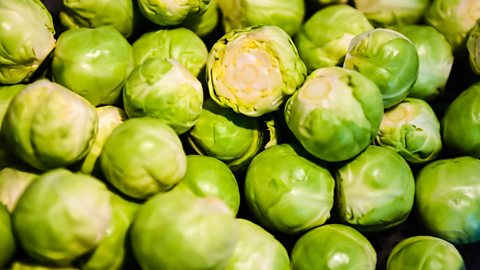
Image caption, Brussels sprouts - Winter
Brussels sprouts like cold temperatures and grow best in winter. That's why they often make an appearance in our Christmas dinners.
Image caption, Carrots - Spring
We have carrots all year round but they are at their best in spring.
Image caption, Lettuce - Summer
Lettuce is best in summer. We often eat more salads in the hot weather.
Image caption, Pumpkin - Autumn
Pumpkins and other squashes are best in autumn. Perfect for carving your pumpkin at Halloween!
1 of 4
Are all foods seasonal?
Some foods are not seasonal. Meat and dairy are available all year. Cows are milked and chickens produce eggs from January all the way to December.
How has technology and transport affected food?
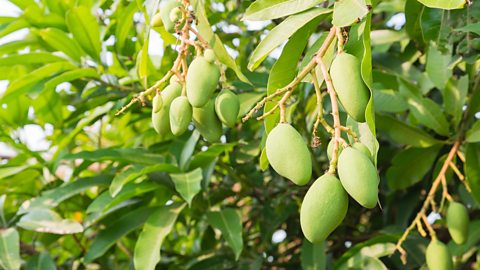
Today we can buy and eat a wide variety of foods all year. Technology and transport mean they do not need to be in season.
- Food can be transported around the world on lorries, boats and even planes.
- Farms use large greenhouses to control the temperature and create the perfect growing conditions. That is why we can buy berries like strawberries and blueberries in the winter when they would not naturally grow outside.
- Tropical fruit comes from places with hot climates like Asia, Latin America and Africa. Most of our pineapples come from Costa Rica. Mangoes come to the UK from a number of countries, including Brazil, Peru, Kenya, Uganda, Pakistan, and Bangladesh.

What are the advantages of seasonal foods?
- Food tastes much better when its grown in its natural season.
- Tasty fresh food grown locally in season is cheaper to buy.
- Seasonal food is better for the environment.
What is the impact on the environment?
Growing and transporting food so that it is always available uses lots of energy which creates CO2. This greenhouse gas is harmful to the environment.
Test your knowledge
Try this short quiz to test your knowledge on seasonal eating.
Challenge
Make a seasonal food calendar. Write down the months of the year and draw a healthy food product that is in season to match the month.
When is your favourite fruit or vegetable in season? Research seasonal eating on ±«Óătv Good Food.
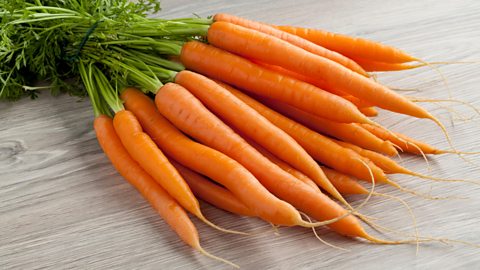
What are the seasons? revision-guideWhat are the seasons?
Learn about the four seasons and how they affect the world around us.
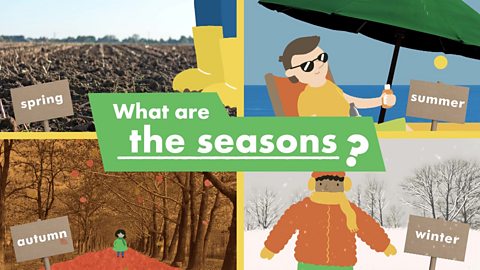
Why does weather change from season to season? revision-guideWhy does weather change from season to season?
Find out why the weather changes with the seasons.
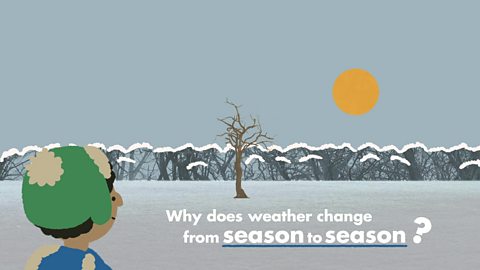
More on Food and health
Find out more by working through a topic
- count9 of 10

- count10 of 10
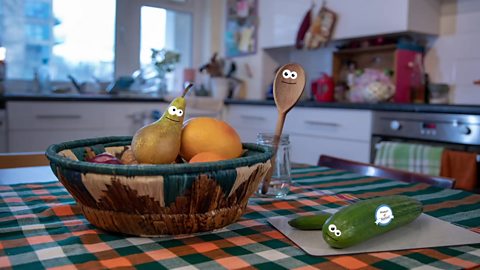
- count1 of 10

- count2 of 10
